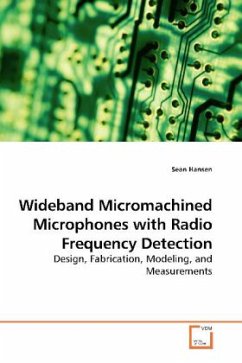There are many commercial, scientific, and military applications for miniature wideband acoustic sensors, including monitoring the condition or wear of equipment, collecting scientific data, and identifying and localizing military targets. Silicon microphones that incorporate capacitive micromachined ultrasonic transducer membranes overcome some of the drawbacks of conventional microphones. These micromachined membranes are small and robust enough to be vacuum-sealed, and can withstand atmospheric pressure and submersion in water. In addition, the membrane mechanical response results in a wideband sensor for accurate spectral analysis of acoustic signals. However, a sensitive detection scheme is necessary to detect the small changes in membrane displacement that result from using smaller, stiffer membranes than do conventional microphones. This dissertation examines the design, fabrication, modeling, and experimental measurements of wideband micromachined microphones using sealedultrasonic membranes and a radio frequency detection technique.








